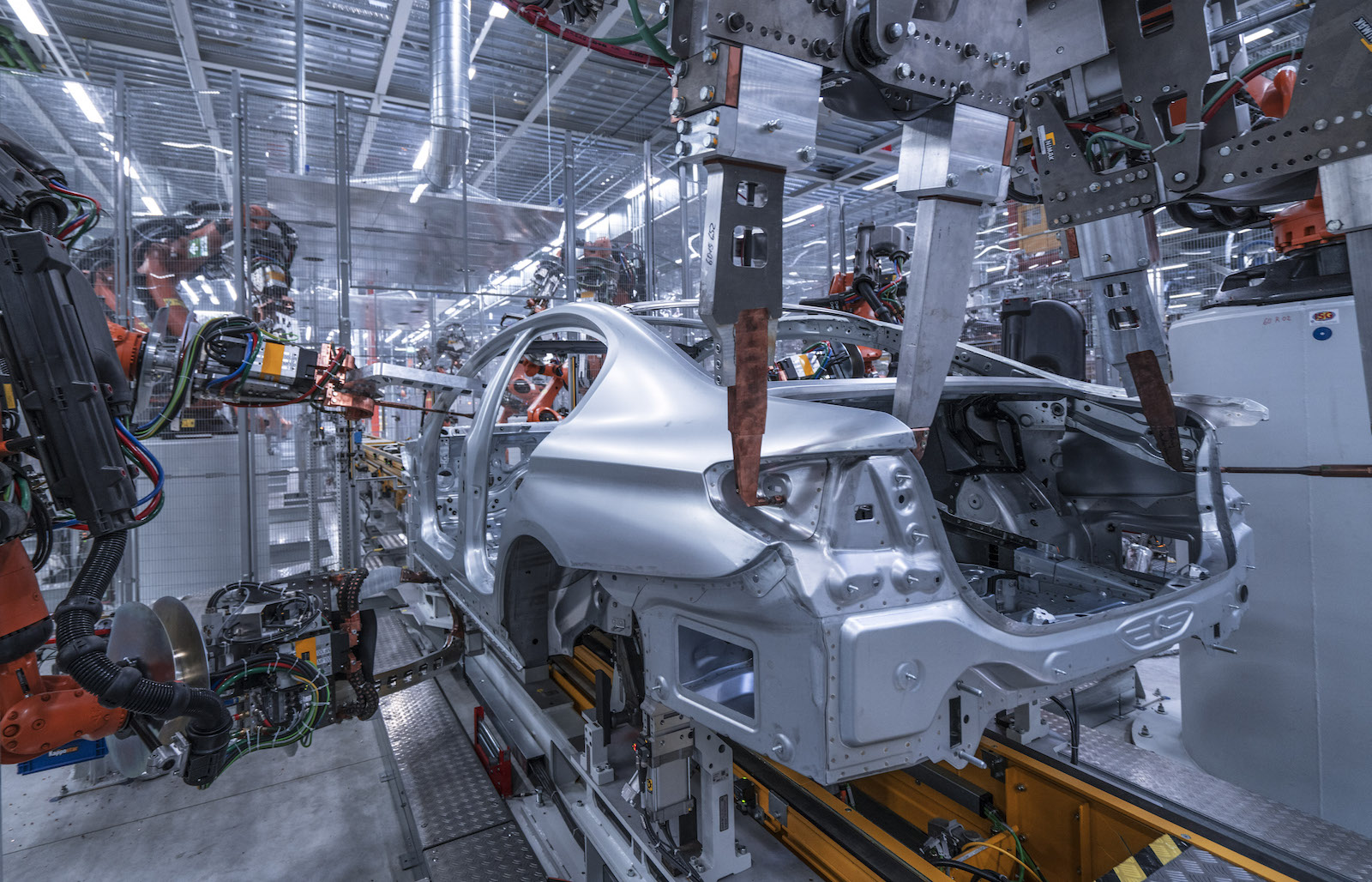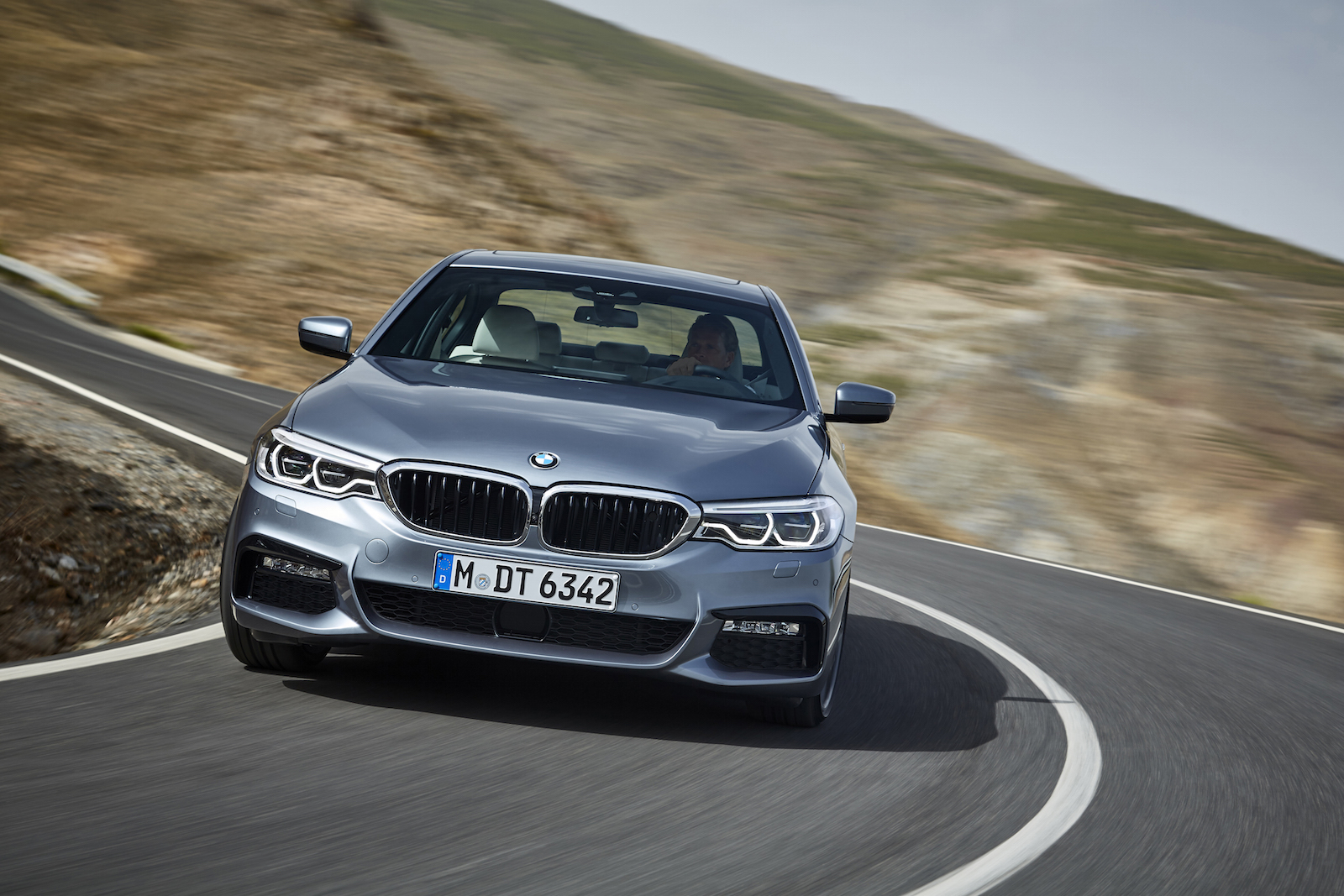
The latest edition of the BMW 5 Series saves 137 lbs (62 kg) compared to the previous model, while body strength and torsional rigidity have been increased. This is thanks to the use of lightweight materials including aluminum, magnesium, and high-strength steel. The new design includes a low center of gravity, a perfectly balanced axle load ratio, and a further reduction in unsprung masses, all of which provide benefits in terms of dynamics and comfort.
Constellium N.V. is supplying aluminum automotive body sheet and crash management systems for the new BMW 5 Series, including its hybrid and touring models. The company is the primary supplier of aluminum sheet, providing the coils used for the inner and outer applications, such as doors, roofs, fenders, deck lids and structural parts. In addition, Constellium designed and produces the rear crash management system, including an integrated holder for the exhaust system.
The hood, trunk, trunk lid, engine cross-member, rear side-members, roof, and doors of the BMW 5 Series sedan are constructed from aluminum. The doors, with laser-cut outer paneling, have an aluminum shell construction that maximizes the weight-reducing benefits of the material when used in combination with state-of-the-art production technologies. The all-aluminum trunk lid is a first for the 5 Series sedan, bringing a weight saving up to 9 lbs.
For the hood outer panel and fenders, Constellium provides Surfalex® with high surface quality and specific hemming and roping properties, which were developed to allow sporty designs that are sharp, sleek, and striking. For the inner hood, the superior formability and mechanical resistance of the company’s aluminum materials solution enables efficient processing of complex shapes.

“BMW is a great customer to work with as they are looking for innovative aluminum solutions for automotive body sheets for their new models,” said Dieter Höll, Sales & Marketing Director Automotive & Specialties. “We are proud to supply the BMW 5 Series not only for closures but also for structural inner parts and reinforcement applications requiring specific crash and mechanical performance such as the one offered by Securalex®HS.
Aluminum is an ideal material for crash management system because it provides superior energy absorption to help protect vehicle occupants in the event of a collision. According to Constellium, it also has a crash behavior that helps reduce damage to the vehicle and, therefore, minimizes repair costs. The bumper beam and crash boxes on the 5 Series are extruded components made from patented high-strength 6000-series crushable alloys, allowing Constellium to design a product that is not only lightweight, but also engineered to customer specifications in terms of size, shape, package space and strength.
The use of aluminum alloys, hot-stamped steels, and multi-phase steels in the passenger cell of the vehicle provides high rigidity, for the best possible passive safety and low weight. The cast magnesium instrument panel support is over 4 lbs lighter than the steel version used on the previous model. Large load-bearing members in the sedan, and strategic use of high- and ultra-high-strength steels in the roof, side members and rear, give the body high structural strength.
Utilizing state-of-the-art simulation techniques and a lightweight design, the body structure of the 5 Series sedan has been optimized for safety, both for the vehicle’s own occupants and occupants of other vehicles. Deformation spaces are optimally are designed with the aim of splitting up the main load paths, so that impact forces are dispersed over as wide an area as possible by the time they reach the extremely rigid passenger cell. This ensures optimal deceleration of the passenger cell in an accident, allowing the front, rear, and side impact restraint systems to provide the most effective protection possible.
